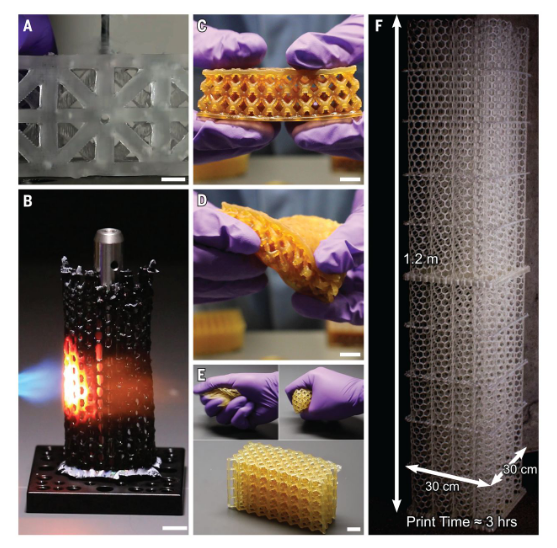Azul 3D, known for its ongoing development of high area rapid printing (HARP) technology, is certainly not lacking in financial resources—or faith from investors. Having just raised another $12.5 million in seed financing, the Skokie, IL startup will expand its printing technology further, along with developing a line of commercial 3D printers. This latest round of funding follows recent financing of over $8 million in May, along with a previous $5.4 million for development and release of their HARP printers.
Investors for this round of funding included:
- Louis A. Simpson, former CIO for Geico, former manager of Berkshire Hathaway and founder of SQ Advisors
- Wally Loewen Baum, former chairperson of 3D Systems
- Joe Allison, former CEO of Stratasys Direct Manufacturing
- Hugh Evans, former senior vice president of corporate development for 3D Systems
“Investors recognize the paradigm shifting and disruptive nature of Azul’s proprietary HARP 3D printing technology,” said Chad Mirkin, Azul 3D cofounder and chair. “HARP’s throughput allows Azul to substantially lower the upfront and sustained costs in the manufacturing of goods, spanning many sectors. The company intends to secure major partnerships validating this point in the very near future.”
As the COVID-19 pandemic continues on in the US and worldwide, Azul 3D has been involved in 3D printing medical face shields. Currently, the company can produce 1,000 parts every 12 hours per HARP printer. The PPE is being used by hospitals, prisons and first responders. The Azul 3D team is expecting to make twice as many shields once their new printers are launched within the next 18 months.
Azul 3D emerged from a research group at Northwestern University upon developing the proprietary HARP technology, a futuristic technique offering powerful on-demand manufacturing capable of printing a part or prototype the size of a human—in just two hours. HARP printers are 13 feet tall, with a 2.5 square footprint bed, and are capable of producing half a yard of material.
3D printing is controlled thermally with a mobile liquid interface allowing for continuous and rapid print process.

A) A hard, machinable polyurethane acrylate part (print rate, 120 μm/s; optical resolution, 100 μm) with a hole drilled against the print direction. Traditional noncontinuous layer-by-layer printing techniques typically delaminate and fracture when drilled in this orientation. (B) A post-treated silicon carbide ceramic printed lattice (print rate of green polymer precursor, 120 μm/s; optical resolution, 100 μm) stands up to a propane torch (~2000°C). (C and D) A printed butadiene rubber structure (print rate, 30 μm/s; optical resolution, 100 μm) in a relaxed state (C) and under tension (D). (E) Polybutadiene rubber (print rate, 30 μm/s; optical resolution, 100 μm) returns to expanded lattice after compression. (F) A ~1.2-m hard polyurethane acrylate lattice printed in less than 3 hours (vertical print rate, 120 μm/s; optical resolution, 250 μm). Scale bars, 1 cm. (Image: ‘Rapid, large-volume, thermally controlled 3D printing using a mobile liquid interface’)
“One of the reasons we’re doing so well is because our technology offers a solution to unexpected surges in demand and supply-chain bottlenecks that occur during global crises, such as in the current pandemic,” said David Walker, Azul 3D cofounder and chief technology officer. “With the ability to manufacture nearly anything quickly and on demand, we can meet these unexpected needs as they arise to quickly fill gaps in the supply chain.
“That’s the big difference between HARP and traditional manufacturing as well as many other forms of 3D printing, which either don’t have the throughput or material properties to meet the required specifications. We don’t have to change a whole assembly line or machine new molds. The concerns that accompany a stressed supply chain simply vanish.”
The first series of beta HARP 3D printers will be shipping early next year, meant to be used in a variety of different applications and supply chains.
Find out more about the unique HARP process here, as well as at Azul 3D.
The post Azul 3D Raises $12.5 Million for Large, Fast HARP 3D Printing Technology appeared first on 3DPrint.com | The Voice of 3D Printing / Additive Manufacturing.




